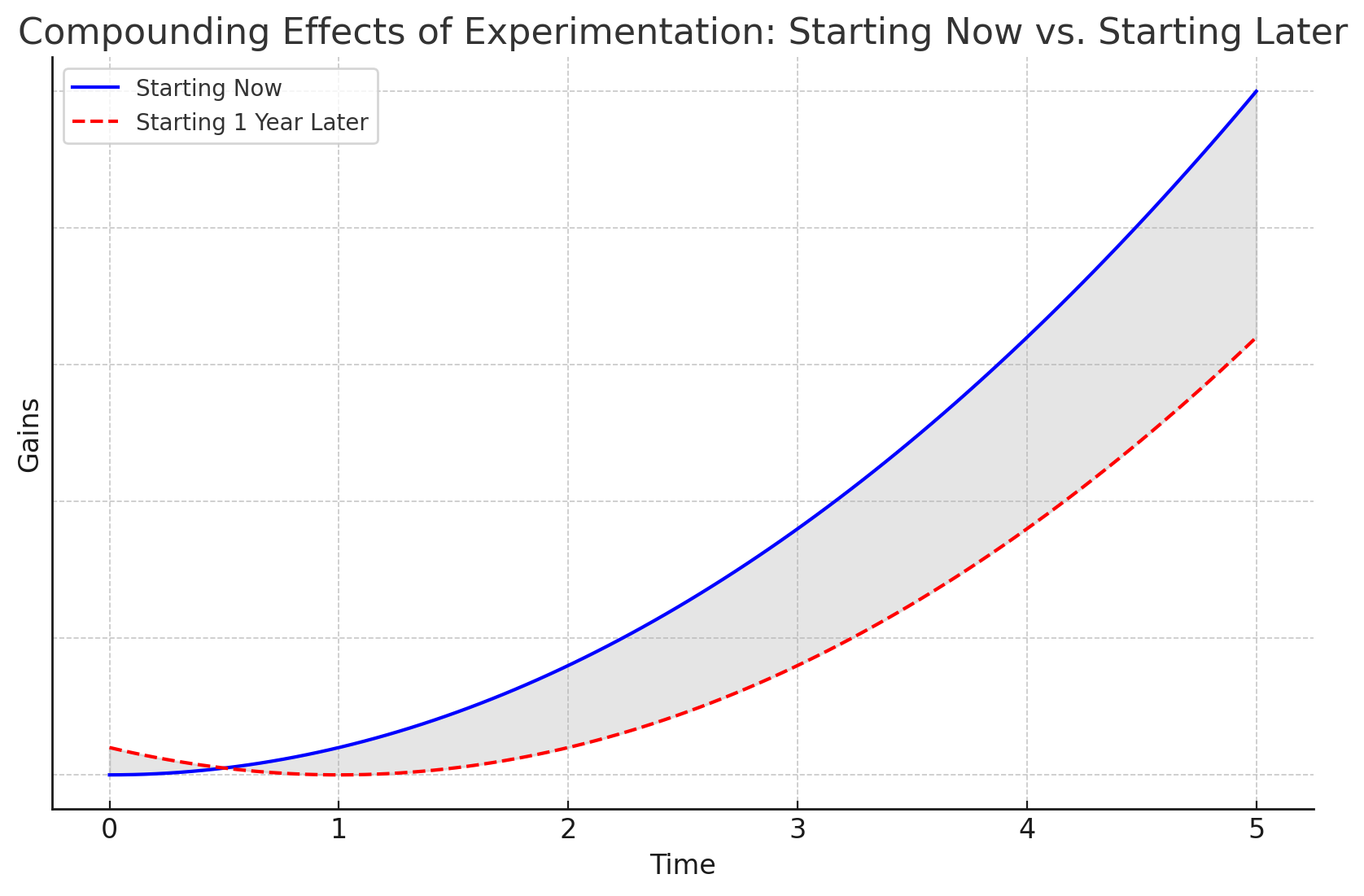Why you should evaluate an experimentation platform sooner rather than later

There’s a popular concept in tech around 'painkillers' and 'vitamins.'
Painkiller products immediately relieve a pain point that you’re feeling. Vitamin products make you better over time, but they don’t solve an acute problem right away. For many companies, experimentation platforms can feel like a vitamin product.
Don’t get us wrong — experimentation platforms can be a painkiller.
The number one 'painkiller problem' that we solve for customers is saving time for the data and engineering teams that are operating an in-house experimentation solution. Experimentation platforms also fix other acute pain points, including:
Giving teams a single source of truth for key product & growth metrics
Lowering the strain on infra and decreasing the chance of data loss
Reducing the cost (and complexity) associated with maintaining in-house systems
However, for companies that have a functional but non-ideal experimentation stack (or companies that don't run experiments) adopting a new experimentation platform can feel like a vitamin.
In this post, we will cover the reasons why you should adopt a robust experimentation platform sooner rather than later. Hopefully, this will help you encourage your team to upgrade your existing experimentation stack.
1. Compounding improvements matter a lot
The cost of delaying improvements in experimentation compounds over time. In this case, the 'cost' is all the experiments you didn't run due to a lack of time or bandwidth to execute and share insights.
This loss might not be immediately obvious, but it includes:
Missed upside from running experiments (i.e., metric uplifts you didn't see)
Negative impact from deploying losing features (i.e., metric regressions that you didn't catch)
Both these elements compound over time. There's a direct impact on growth when comparing starting now versus a year from now, as illustrated below:

Faster release cycles and higher experimentation velocity lead to more winning features. Notion serves as an excellent example of making an early move away from their existing tooling when they realized they couldn't conduct exclusive experiments at scale.
What was the result? They increased their experimentation velocity by 30X, going from single-digit to hundreds of experiments per quarter. By leveraging Holdouts, they tested a range of product-led growth (PLG) features, significantly boosting their Activation rate. Clearly, moving early can be a game-changer and directly impact growth.
2. The cost of implementing a new tool increases over time
The 'cost' of implementing a new tool increases over time. The 'cheapest time' to implement a new tool is today, rather than later. Why? Because it will only become more time-consuming (and costly) to integrate new tools as you:
Continue adding complexity to your existing processes
Accumulate more technical debt
Teams rarely add resources faster than they accumulate technical debt, which makes it important to move soon. In the long run, the cumulative gains from improvements will significantly outweigh the initial cost of upgrading your platform.
Read our customer stories

3. Migration is often not as hard as perceived
If you haven't looked at the current generation of experimentation tools, you might think that migrating to a new experimentation platform is really hard. But, it's not.
The new, cutting-edge platforms offer 3 key features that can save you time:
Warehouse native experimentation: Warehouse native implementations allow you to use your existing data pipelines and tables for experiment analysis. All you need to do is connect your exposure and metrics tables, and you'll be up and running with automated experiment analysis.
Event-forwarding integrations with CDPs & Analytics platforms: You can easily ingest data from tools like Segment (without the need for additional logging) and include them in your experiment results. Use Statsig's out-of-the-box integrations to kickstart analysis from Day One.
Migration scripts: Most platforms offer scripts that ensure a smooth transfer of your existing configurations. For example, if you're migrating from LaunchDarkly, you can take advantage of Statsig's migration tool that lets you port your feature flags in under 5 minutes!
Consider the case of Linktree, which smoothly transitioned to Statsig from LaunchDarkly -- they were using feature flags but realized they lacked sophisticated experimentation capabilities. As part of the migration, they needed to ensure that the same user segments were available in Statsig, but the migration itself was seamless, resulting in increased experimentation velocity and long-term savings by consolidating capabilities into a single platform.
Here is a great blog on what migrating experimentation platforms actually entails. The process is often more structured and straightforward than many organizations realize.
4. You don't know what you're missing until you see the state of the art
We frequently encounter teams that don't believe they need a new solution, but their perspective often changes dramatically once they see what the state-of-the-art looks like.
These teams are often using legacy platforms that have significant limitations in stats engine capabilities, SDK support, scalability, reliability, and the range of use cases supported. Questions to consider:
Do you have granular control for flexible, precise targeting of users?
Does your SDK support end-to-end event logging on all the surfaces you want to experiment on?
Are you able to automatically convert every rollout into an A/B test?
Do you have a single view of all core metrics for every rollout?
Can you conduct many concurrent experiments?
Are you equipped with features like mutual exclusion, CUPED, holdouts, and multi-armed bandits?
Does your platform bring cross-functional teams together for collaboration and sharing of experiment data?
Statsig was developed to democratize big-tech experimentation capabilities, giving engineering and product teams the autonomy to ship faster and measure impact effectively. In fact, many of our early adopters were former Directors and VPs at FAANG companies who advocated for bringing the advanced capabilities they had experienced previously to their new organizations.
Presenting a product demo to your teams, whether it's our solution or another, often highlights deficiencies in existing tools and underscores the need for evaluating a new solution.
Get a free account

5. Maximizing your learnings amidst market changes
Experimentation is as much about learning as it is about driving tangible results. In dynamic markets, it's crucial to test new ideas by presenting them to customers early and continuously monitoring their impact.
Toney Wen, CTO & Co-Founder of Cider, the global Gen-Z fashion brand, emphasized the importance of experimentation during their expansion to over 160 countries, stating, "Experimentation serves as the gateway for understanding our customers."
The longer you delay upgrading your experimentation platform, the more learning opportunities you miss, hampering your team's ability to make data-informed product investments.
So how do you know whether it's time to evaluate a new experimentation solution for your team? Here are some tell-tale signs that your current systems are not living up to the mark:
Currently running only a few (single-digit) experiments per year
Facing bottlenecks and delays in analysis
Dealing with extensive manual data work
Concerns around scalability and reliability of results
Data silos, frustrated teams, missed opportunities, and slow release cycles
If that sounds relatable, then now is the ideal time to evaluate a new platform. You're already losing valuable data time that could be better spent evaluating and implementing a new tool that can unlock long-term value for your company!
Request a demo


